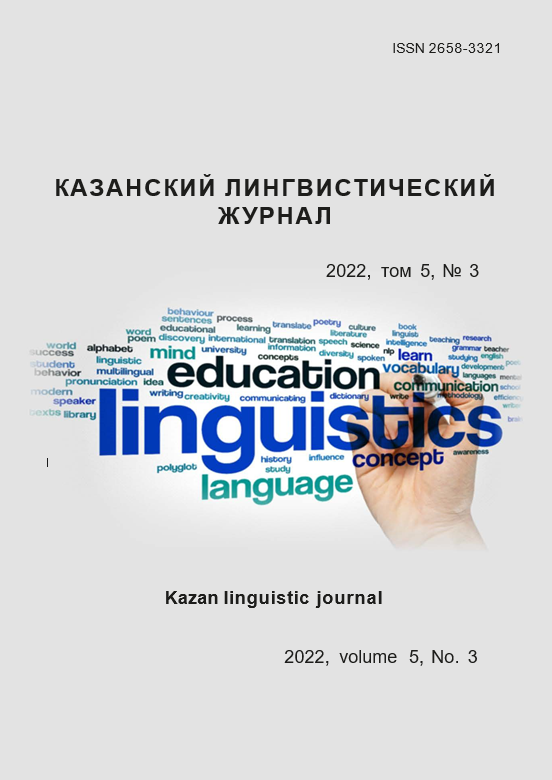Multimedia narrative in Russian and English-language media courses
https://doi.org/10.26907/2658-3321.2022.5.3.369–378
Keywords:
media discourse, digital mass communications, narrative, narration, narrative analysis, Russian, EnglishAbstract
The article considers actively developing multimedia media in Russian and English. The relevance of this work is due to the insufficient coverage of the specifics of multimedia narrative in Russian studies, therefore, the question of the similarities and differences between Russian and English-language multimedia narratives remains open. The aim of the work is to identify integral and differential narrative categories in the Russian and English media spaces. The research was carried out at the junction of related sciences: linguistics, communication theory, media journalism. The material was the Russian-language and English-language versions of the popular magazine Marie Claire,freely available on the Internet. In total, about 200 articles on various topics were analyzed. The criteria of the comparative analysis were seven consolidated narrative categories: the author's position in relation to the narrated, the theme of the narrative, the way of characterization of the characters, the type of plot, the type of conflict, the time of the narrative, as well as the organization of space. Qualitative and quantitative analysis of the published multimedia materials allowed us to conclude that the similarity of the Russian and English-language narratives in the subject, the way of organizing the plot, the time of narration. The differences are more evident in the use of a different number of multimedia elements working to attract attention to social conflicts and media personalities in the English edition. Russian narrative is marked by the text-centricity and dominance of mat erials that actualize the frame space of the language, appealing to background knowledge and reflection, which brings the Russian media narrative closer to the artistic one.
References
References
Shchukin A.N. Linguodidactic encyclopedic dictionary: more than 2000 units. Moscow: AST [et al.]; 2006. (In Russ.)
Lotman Yu. M. The structure of a literary text. Moscow; 1970. (InRuss.)
Lotman Yu. M. Inside thinking worlds. Man – text – semiosphere – history. Mos-cow; 1999. (In Russ.)
Schmid V. Narratology. Moscow; 2003. (In Eng.)
Fludernik M. Introduction to narratology. London, New York; 2009. (In Eng.)
Bal M. Narratology: An Introduction to the theory of narration. Toronto, Buffalo; 1997. (In Eng.)
Kazak M.Yu. The specifics of the modern media text. Linguistics of speech. Media journalism: call. monogr. Moscow: Flint: Nauka, 2012; 320-334. (In Russ.)
Valgina N.S. Text theory: textbook for universities. M.: Logos; 2003. (In Russ.)
Berning N. Narrative journalism in the Internet era: new ways of creating authentici-ty in online literary reports. Available from: http://www.uni-muenster.de/textpraxis/nora-berning-narrative-journalism-in-the-age-of-the-internet [accessed 06.22.2022]. (In Eng.)
Hernandez R., Ru J. (2015). Principles of multimedia journalism: Packaging of digi-tal news. New York; London: Routledge; 2015. P. 8-30. (In Eng.)
Kartveit K. Multimedia journalism and narrative flow. PhD thesis. ... series for Det Humanistiske Fakultet, Aalborg University; 2016. (In Eng.)
Berning N. Narrative means of achieving journalistic goals: A Narratological analy-sis of selected journalistic reports; 2011. (In Eng.)
Marie Claire. Russia. Available from: https://www.marieclaire.ru [accessed 06.24.2022]. (In Russ.)
Marie Claire. Co. UK. Available from::https://www.marieclaire.co.uk/fashion/shopping/summer-sandals-the-marie-claire-edit-216663 [accessed 06.24.2022]. (In Eng.)






